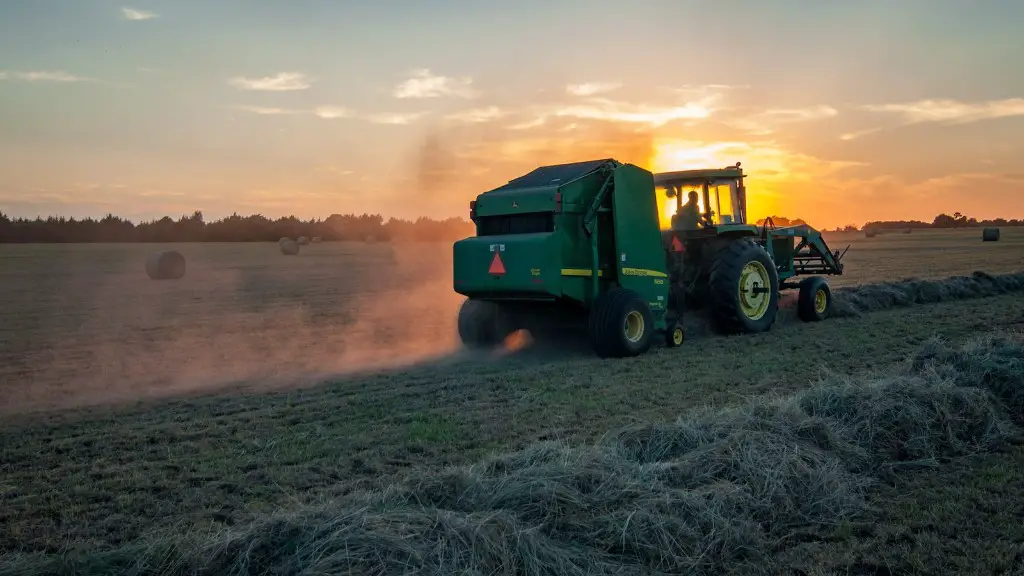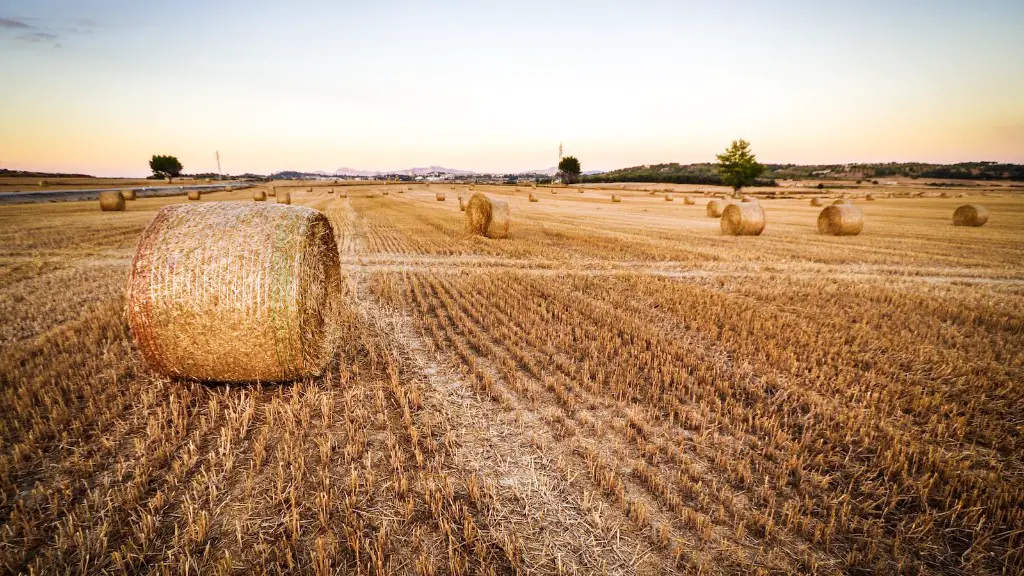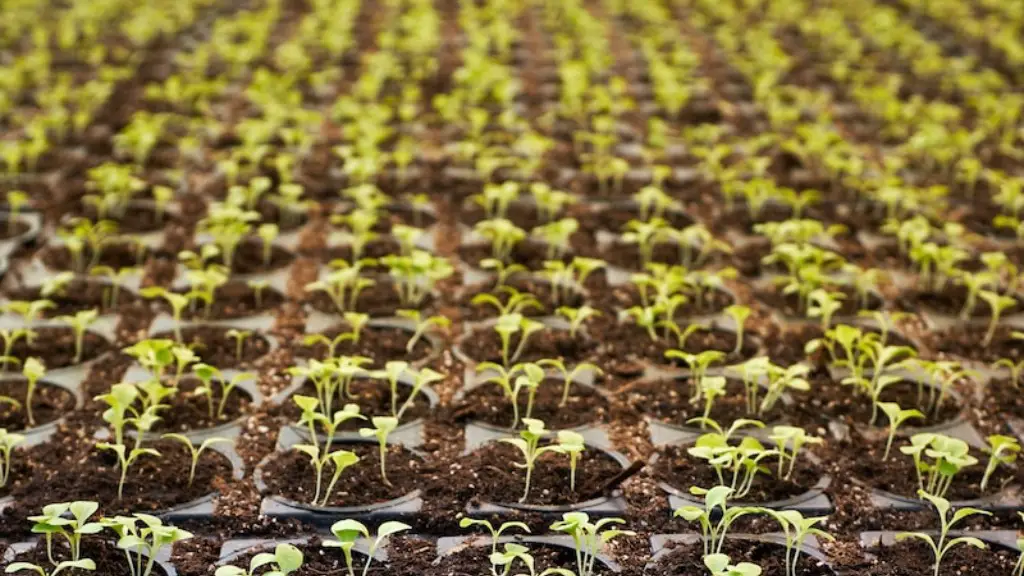Agricultural development can be attributed to a variety of factors, depending on the specific region where the development occurred. Some common factors that led to the emergence of agriculture include changing climate conditions, the availability of suitable soil and land, the presence of wild plants and animals, technological innovations, and human migration.
Climate change has played a prominent role in the development of agriculture in different parts of the world. As climate conditions fluctuated, the growing seasons for certain plants and animals changed along with it. This had a significant effect on the cultivation of crops and the maintenance of livestock, which had to adapt to changing weather patterns and availability of resources.
The availability of suitable soil and land for cultivation is another factor that contributed to the emergence of agriculture. Regions with deep and fertile soils and favorable temperatures provided ideal conditions for the cultivation of various crops and the raising of livestock. Different types of terrains such as mountains, valleys, and coastal areas could also be used for specific purposes that further promoted the practice of agriculture.
Wild plants and animals have also been important in the emergence of agriculture. Humans have extensively used domestic crops and breeds derived from wild plants and animals for agricultural production over the ages. The domestication of various animals, such as horses and cattle, also helped in the agricultural revolution by providing humans with new sources of labor, transportation, and nutrition.
Technological innovations have also been important in the emergence of agriculture. The invention of the plow and other tools revolutionized the cultivation of land and had a significant effect on the development of agriculture. As tools and techniques evolved, the production of food increased and became more efficient.
Human migration has contributed to the expansion of agriculture in different parts of the world. As humans migrated to new lands and regions, they brought with them their knowledge and experience, which helped in the development of agriculture in their new environments. Human migrations thus played an important role in the spread of knowledge and the emergence of agriculture in different parts of the world.
In conclusion, the emergence of agriculture has been influenced by a variety of factors, including climate change, availability of suitable soil and land, domestication of plants and animals, technological innovations, and human migration. All of these factors played significant roles in the development and expansion of agriculture in different parts of the world.
Climate Change and Agricultural Emergence
Climate change has had profound effects on the formation and development of agriculture in various regions around the globe. Fluctuating temperatures and changing weather patterns have affected the growing seasons of different crops and animals and have altered the way in which farmers produce food. In some areas, changing conditions have led to the mass cultivation of certain crops while in others, the introduction of crops adapted to local conditions has been the deciding factor in the emergence of an agricultural revolution.
The introduction of new farming techniques such as crop rotation and the use of water-saving irrigation methods have also been largely attributed to changing climatic conditions. Furthermore, the rise in temperature has led to the development of innovative techniques such as the use of greenhouses, which has allowed farmers to grow crops in regions previously inhospitable to agriculture. As a result, climate change has played a major role in the emergence of agriculture in different parts of the world.
Climate change has also been a major factor in the emergence of sustainable agriculture. As temperatures continue to rise, farmers are increasingly looking towards practices such as integrated pest management and water-saving technologies to help reduce their impact on the environment and promote sustainability. Similarly, the use of renewable energy sources such as solar and wind power has become increasingly popular, allowing farmers to generate electricity from the sun and wind while reducing their reliance on fossil fuels.
Finally, changing climatic conditions have also been a major factor in the emergence of organic farming. With a greater focus on managing natural resources responsibly and on promoting sustainable practices, organic farming has become an increasingly popular option amongst farmers wishing to reduce their environmental impact. The growing prevalence of organic farming in various parts of the world is evidence of the prominent role that climate change has had in the formation and development of agriculture.
Suitable Soil and Land
The availability of suitable soil and land for cultivation has been another major factor in the emergence of agriculture. Different types of land can provide different types of soils, with some providing deeper and more fertile earth than others. Regions with such soils and favorable temperatures prove ideal for the production of a variety of crops and the growth of animals such as cattle, goats, and horses. Such lands thus provide farmers with the foundation for the establishment of successful agricultural communities.
The use of new tools and technologies, such as the plow, has allowed farmers to make better use of the land available to them. Such tools make the manual cultivation of land easier while also providing farmers with more efficient ways to extract nutrients from the soil. The development of such tools has been a defining factor in the expansion of agriculture in various regions.
The use of terrains such as mountains, valleys, and coastal areas has also been instrumental in the emergence of agriculture. Different terrains offer different types of soil, which can be used for specific purposes. For example, terrains with higher elevations can be used for the cultivation of vegetables, while terrains with lower elevations can be used for the production of cereals and grains. Different terrains can thus provide farmers with the resources necessary for the successful cultivation of different crops and animals.
The presence of suitable soil and land is thus an essential factor in the emergence of agriculture. Such soils and lands provide the basis for the establishment of agricultural communities, with the availability of tools and technologies allowing farmers to make better use of the resources available to them. The presence of suitable land and soil can therefore be regarded as a major factor in the emergence of agriculture.
Wild Plants and Animals
Wild plants and animals have also been important in the emergence and development of agriculture. The domestication of various plants and animals has led to the production of distinct varieties more suited to human needs and preferences. As a result, humans have been able to produce higher yields of certain crops while also making better use of the resources available to them.
The domestication of animals such as horses and cattle has also provided essential benefits. Domestic horses and cattle have been used as sources of labor and transportation, as well as sources of nutrition in some regions. Such animals provide farmers with essential resources that can help in the production of quality crops and livestock.
The available diversity of wild plants and animals has also played a major role in the emergence of agriculture. With the introduction of new breeds and varieties of plants and animals, humans have been able to cultivate land and produce food more efficiently than before. Such diversity can thus be seen as a major factor in the emergence of agriculture.
The emergence of new agricultural technologies, such as hydroponics and biotechnology, has also been largely attributed to the use of wild plants and animals. By selectively breeding certain plants and animals and using them in experimental farming techniques, humans have been able to create new ways of producing food, allowing for the efficient cultivation of lands previously thought unproductive.
Wild plants and animals thus play an important role in the emergence and development of agriculture. From providing farmers with new sources of labor and transportation to promoting innovative new methods of cultivating land and producing food, such resources have been instrumental in the revolution of global agriculture.
Technological Innovations
Technological innovations have also been important in the emergence of agriculture. The invention of new tools and machines such as the plow, irrigation systems, and tractors have revolutionized the way in which farmers cultivate land and tend to crops and livestock. Such innovations have allowed farmers to increase their productivity while also making better use of their available resources.
The invention of more efficient ways to harvest crops, such as the combine harvester, has also been a defining factor in the emergence of agriculture. By increasing the rate of harvest, such machines have allowed farmers to harvest more crops in less time. The emergence of such technologies has thus been instrumental in the agricultural revolution.
The advent of modern technologies such as greenhouses and hydroponics has also been important in the emergence of agriculture. These technologies have allowed farmers to cultivate lands in regions previously thought inhospitable to agriculture. Such advances have been crucial in allowing for the expansion of agriculture and the sustained production of food in various parts of the world.
The introduction of new technologies such as sustainable energy sources and artificial intelligence have further revolutionized the way in which farmers manage and produce food. Sustainable energy sources such as solar and wind power have allowed farmers to generate electricity from renewable sources while artificial intelligence can be used to monitor and manage crops and livestock. Such technologies have provided farmers with the tools necessary for the efficient production of quality food.
In conclusion, technological innovations have been an essential factor in the emergence of agriculture. The invention of new tools, machines, and technologies has allowed for the efficient production and harvesting of food, as well as the expansion of crop cultivation into new regions. Such innovations must thus be regarded as a major factor in the development and emergence of agriculture in different parts of the world.
Human Migration
Human migrations have also played an important role in the emergence of agriculture. As humans moved to new regions, they brought with them their knowledge and experience in farming, which allowed them to cultivate different lands and produce food in their new environments. Such migrations also allowed for the transfer of knowledge and experience between different cultures, which further contributed to the development of agricultural practices in diverse parts of the globe.
Human migrations have also led to the diversification of plants, animals, and farming practices in different regions. By introducing new types of crops and animals to different areas, migrants have allowed for the development of unique agricultural systems adapted to their new environments. As a result, such migrations have been instrumental in the emergence of agriculture in many parts of the world.
In addition, such migrations have resulted in the emergence of new trade relationships between different peoples and cultures. With the introduction of different crops, animals, and farming methods, trade has become much more viable and efficient, leading to the growth of agricultural commerce in various parts of the world. This in turn has provided farmers with new sources of income and allowed them to make better use of their resources.
Finally, human migrations have encouraged the spread of agricultural knowledge and techniques between different groups of people. Such exchanges have allowed for the sharing of new and innovative techniques, as well as the exchange of medicinal and nutritional knowledge. As a result, this has helped facilitate the development and emergence of agriculture in different parts of the world.
In conclusion, human migration has been an important factor in the development and emergence of agriculture. By introducing new plants, animals, and farming techniques to different regions, as well as facilitating the sharing of knowledge between different peoples, such migrations have contributed significantly to the growth of global agriculture.





